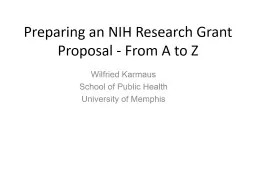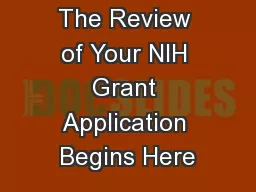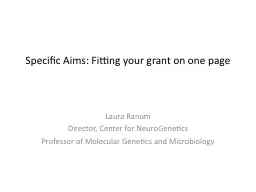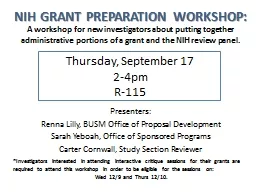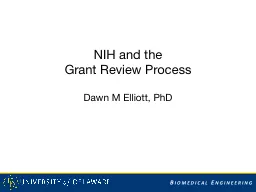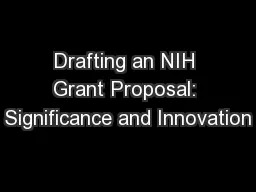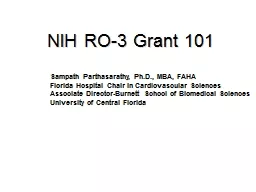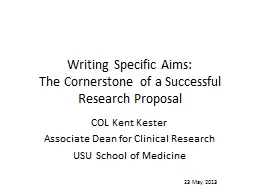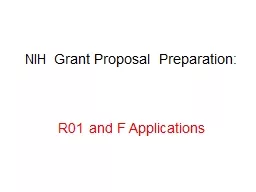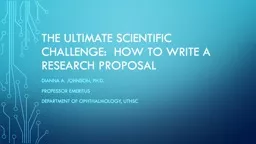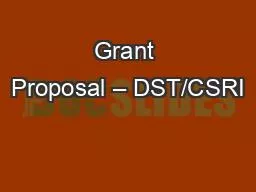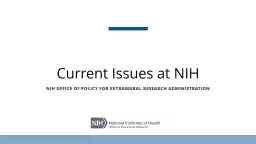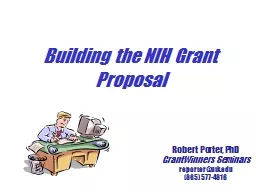PPT-Preparing an NIH Research Grant Proposal - From A to Z
Author : LetsGetDrunk | Published Date : 2022-08-01
Wilfried Karmaus School of Public Health University of Memphis Flow of ideas passion and dreams Scientific work Curiosity ambition passion Flow of dataanalyses
Presentation Embed Code
Download Presentation
Download Presentation The PPT/PDF document "Preparing an NIH Research Grant Proposal..." is the property of its rightful owner. Permission is granted to download and print the materials on this website for personal, non-commercial use only, and to display it on your personal computer provided you do not modify the materials and that you retain all copyright notices contained in the materials. By downloading content from our website, you accept the terms of this agreement.
Preparing an NIH Research Grant Proposal - From A to Z: Transcript
Download Rules Of Document
"Preparing an NIH Research Grant Proposal - From A to Z"The content belongs to its owner. You may download and print it for personal use, without modification, and keep all copyright notices. By downloading, you agree to these terms.
Related Documents

